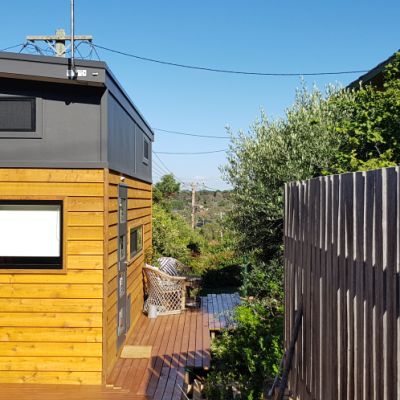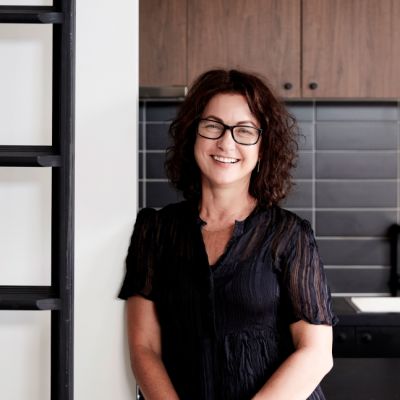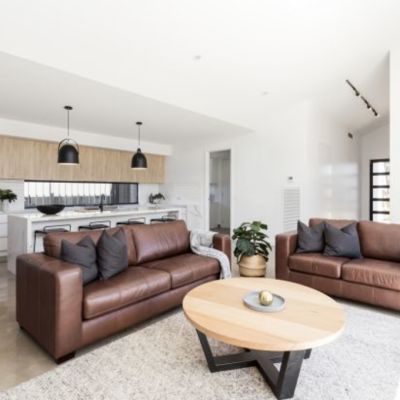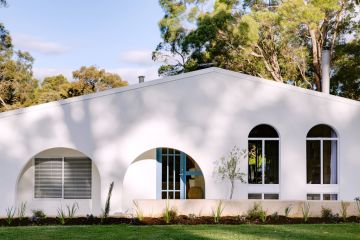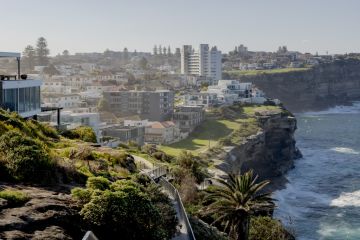'The house that beer built': Inside a home built almost completely of straw
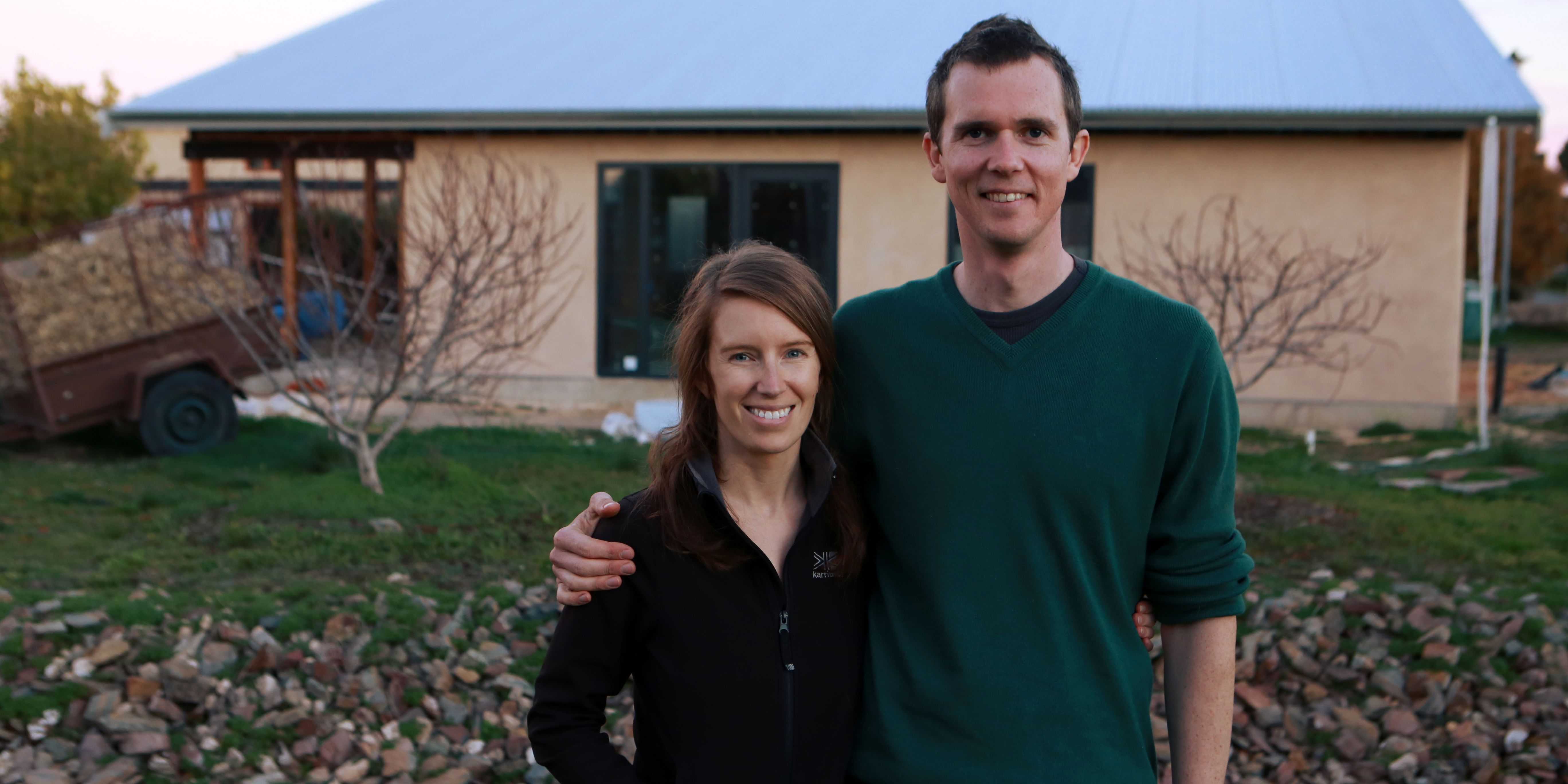
When Sam Ryan and Dani Austin decided to build their first house, they knew they weren’t going to build one like everyone else’s.
Instead, they wanted to build theirs from straw.
Far from the flimsy stuff made famous in the tale ofThe Three Little Pigs, the couple knew a straw home was both sturdy and environmentally friendly. And that’s exactly why they wanted to live in one.
“We were living in the UK, did some different natural building courses and strawbale was one of those. We found it was so much easier, faster, less labour intensive and you didn’t need a lot of skills in order to do it. We have no trade background, but are keen builders,” Ryan says.
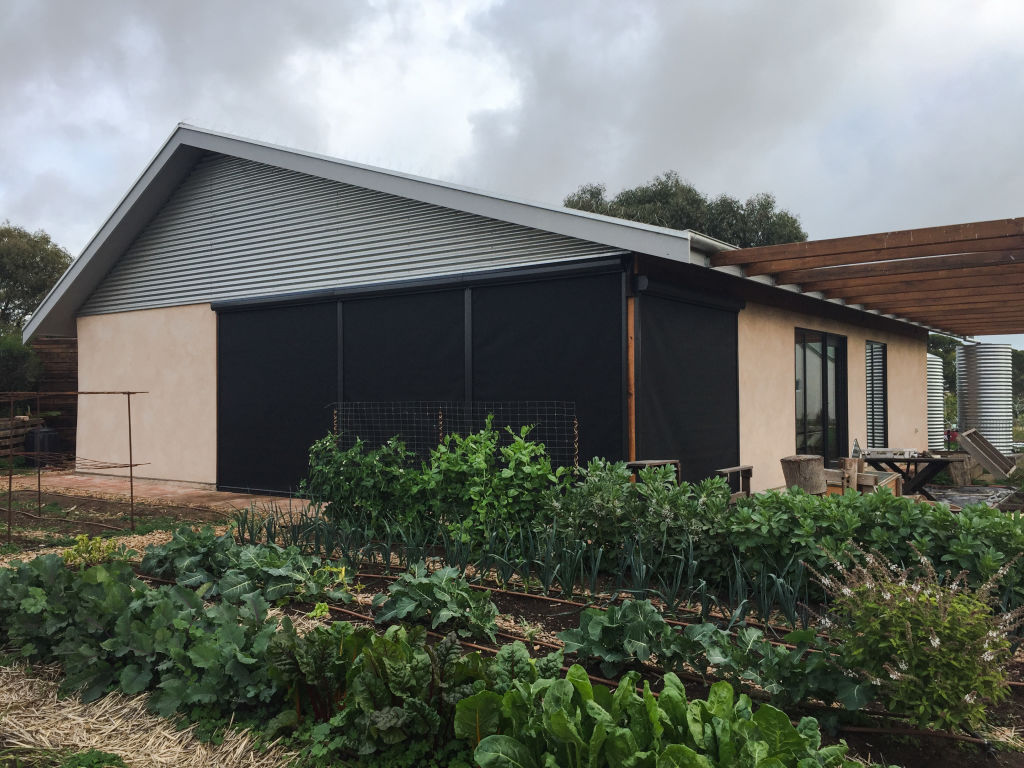
Set in the Aldinga Arts Eco Village about an hour south of Adelaide, Ryan and Austin’s two-bedroom, one-bathroom straw dwelling sits among the landscape, unimposing and seamless in its ability to blend in with its surroundings.
“It feels so cosy in winter, and is protected from the sun in summer,” Austin says. “It looks like it has these big castle walls that look almost stone-like, because the render has a grey to it. They look like these big stone walls that feel sturdy and protected.”
The house was built predominately out of barley straw because of the sheer volume produced in South Australia for beer, leading Ryan to dub it “the house that beer built”.
Having lived in the house for a year now, the couple say there have been a couple of key things that have surprised them about the set-up. The first, they say, are the environmental benefits.
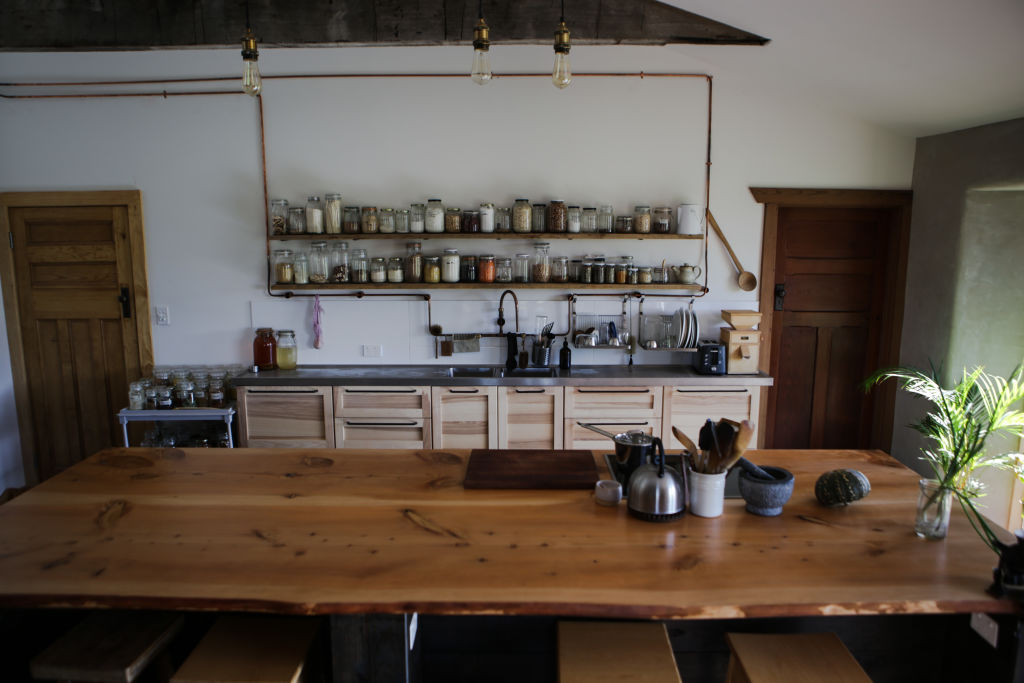
“We knew it academically, but living among all the benefits we are blown away. You think it’s going to work on paper, and then you move in and it really does work,” Ryan says.
“We thought a lot about having a passive house, meaning that it needs no heating or cooling at all.”
Largely, the temperature within the home looks after itself.
“With the heat wave in Adelaide at the moment we don’t get the cool nights, the house just slowly warms up over the course of a few days and it can be hard to get the house cool. We just have to pull the curtains and try not to open the doors that go directly outside. It’s the best you can do above ground.”
Austin adds she has been as equally delighted about how much people love what they have built.
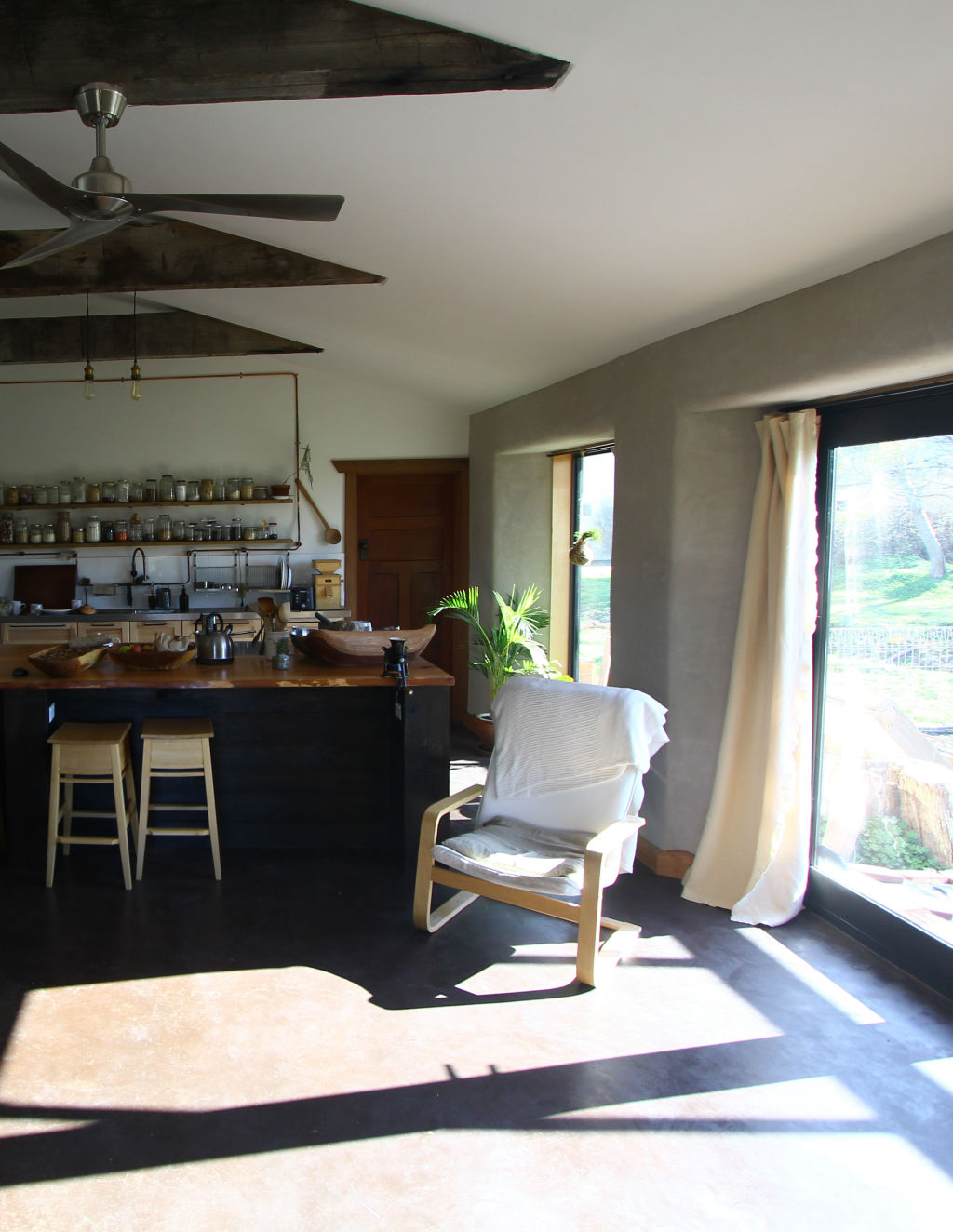
“At first we couldn’t work out if everyone was just being nice, but so many have said they love the feel, the smell, and the proportions of the space. The 60-centimetre thick walls give a sense of solidity and security, especially in the open living space. We knew that by using natural materials wherever possible we would create an earthy aesthetic, but the warm colours and soft textures have come together beautifully,” she says.
While the environment was front of mind during the 2017 build, the aesthetic was a crucial second.
“Aesthetics were really important to us, because although the materials are all natural, it can be really modern,” Austin says. “The straw can cater to different aesthetics, it can be curly and hobbit-like, or it can be really clean and straight and sleek. We went for somewhere in between. In a broader sense, we wanted it to look good, so we went lots of earthy colours.”
She adds her favourite feature of the home are the five-metre long wooden beams in the living room.
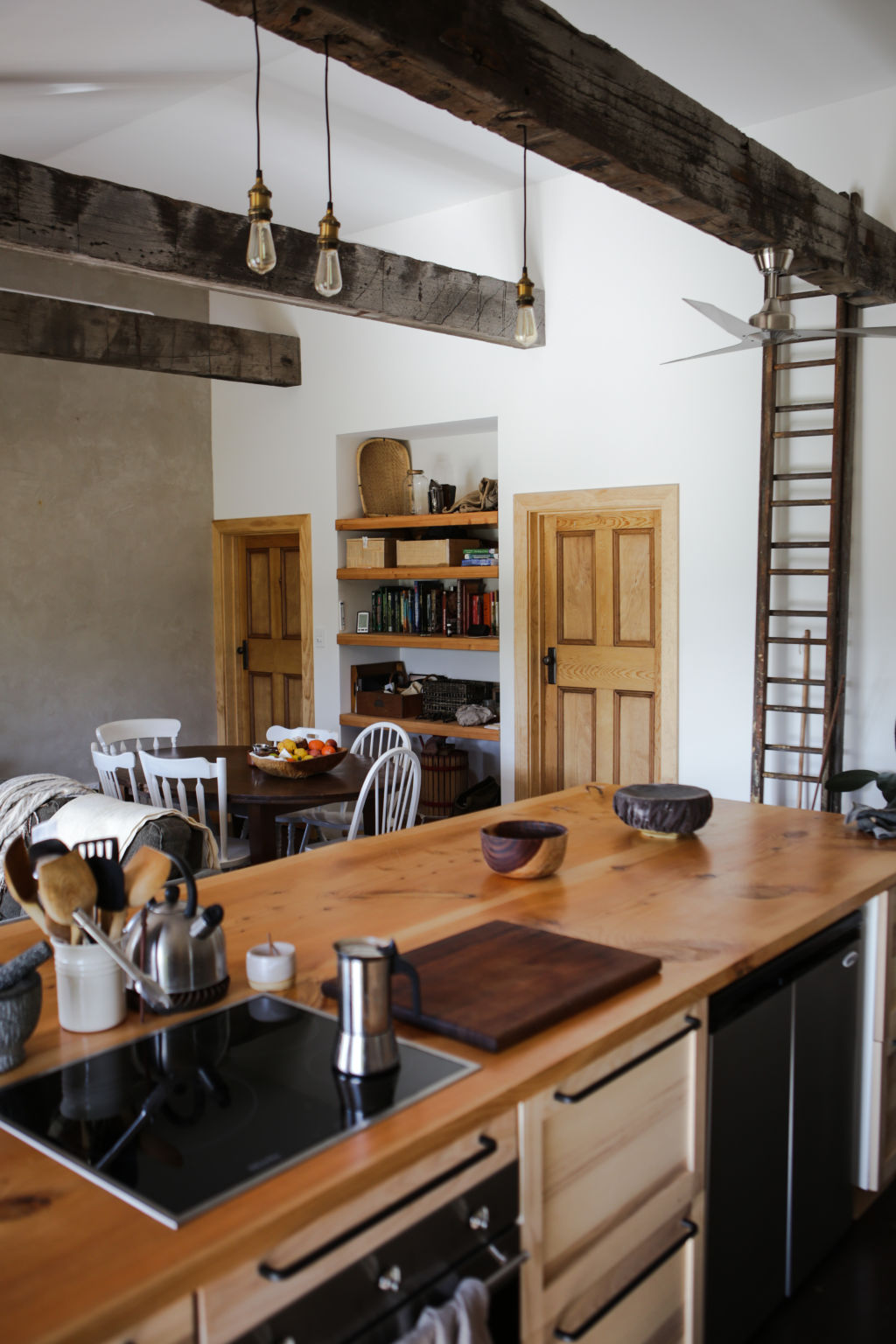
“They’re semi-aesthetic, semi-functional. They don’t have any structural value, but they are beautiful and from the Moonta Bay jetty in South Australia that was semi-demolished 10 years ago after being built in 1850s. So the trees that grew the beams started life 300 years ago.”
While the couple adore the home, they know they are “unusual” in the way they built it. They suggest a complete lack of awareness about building with natural materials contributes to few people undertaking the task.
“A good friend of ours is an architect and he told us it was a phenomenally small number of houses that are built with architects. For people to then choose a straw bale architect, you’re looking at a much smaller number of people even again,” Ryan says.
“People do think it will be more expensive,” Austin adds. “We watched plenty of Grand Designs and thought, too, hiring an architect would be more expensive but it really wasn’t. It was a few thousand, not a massive cost, and an architecturally-designed house means they can design small things that could save you square-meterage.”
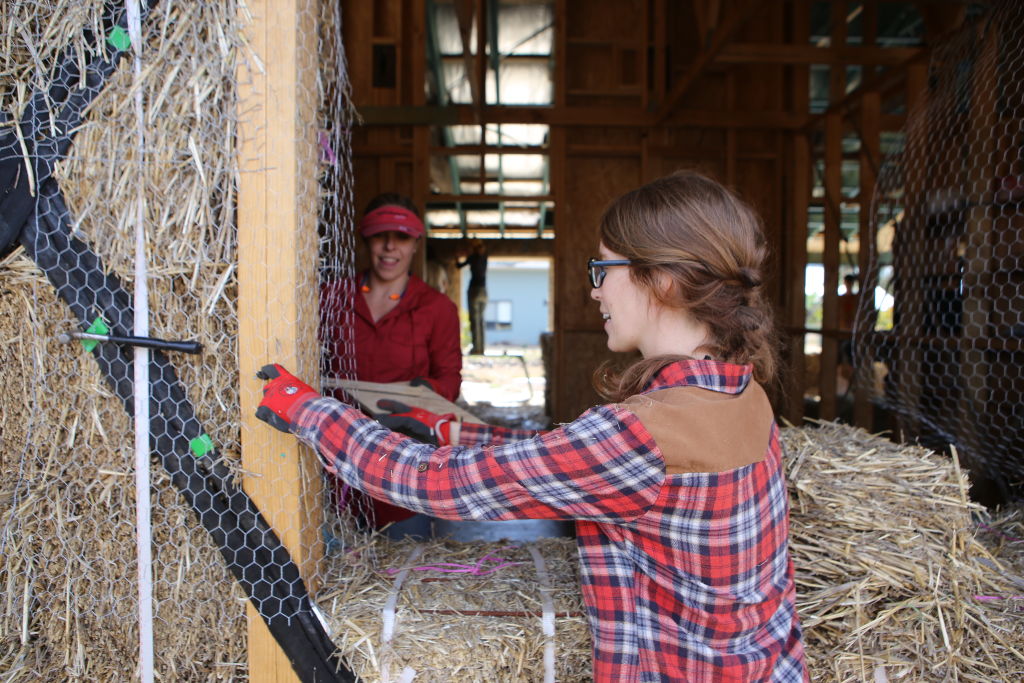
The couple, who run a small business called Folk of all Trades where they share tips, tricks, and stories of sustainable crafts and skills, say the house is just a “much bigger picture” of how they live.
“It’s helped us even more moving forward, we were interested in living sustainably before, but we are even more involved now. The way we can live here is one where we are learning lots of new skills and that’s what we want to teach others. The house is just an example.”
You can follow more of Austin and Ryan’s sustainable lifestyle at Folk of All Trades on Instagram and Facebook.
We recommend
We thought you might like
States
Capital Cities
Capital Cities - Rentals
Popular Areas
Allhomes
More
- © 2025, CoStar Group Inc.
